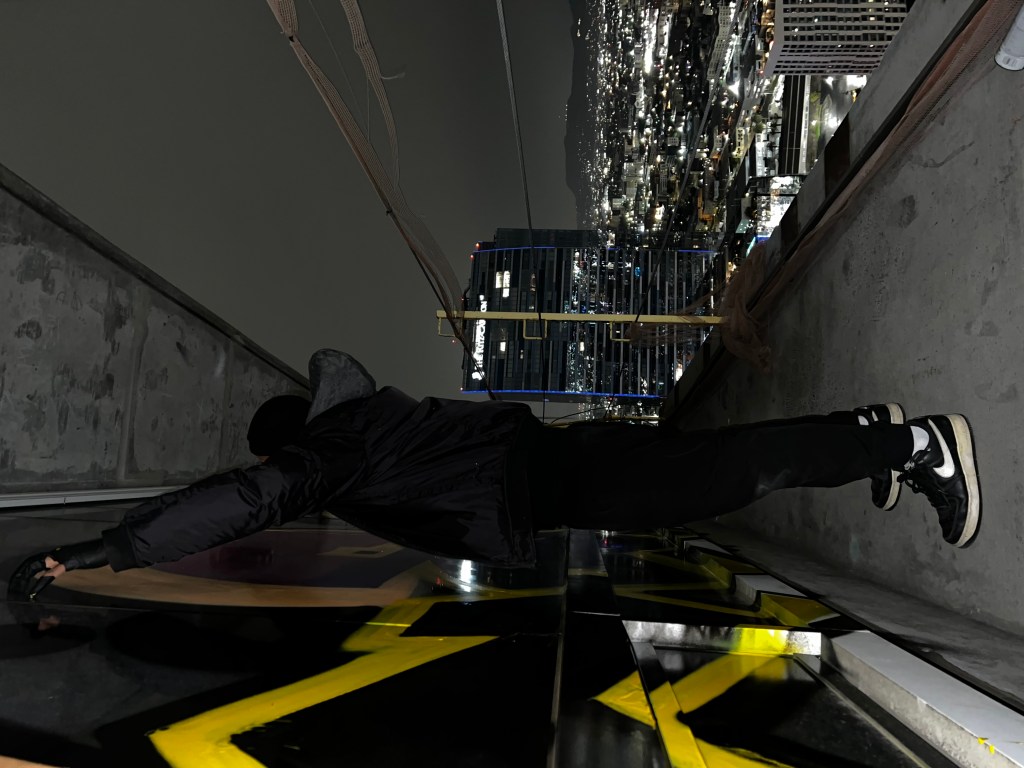A month ago, a trio of abandoned buildings in downtown Los Angeles transformed into a canvas for graffiti art seemingly overnight. In the last few weeks, the luxury apartment high rises across the street from the Crypto.com Arena and LA Live have been systematically claimed by anonymous taggers in the dead of night, with each leaving their mark in one of the many large windows that compose the facades of each building.
Some have clutched their pearls at the buildings’ makeover, considering the graffiti vandalism and calling the state of the buildings an eyesore. Meanwhile, others have welcomed the transformation, making the point that the real tragedy is that three 53-story billion-dollar apartment buildings have sat dormant in the city’s center for five years and that artists bringing life and flair to the buildings is beautiful.
It became a staple in Los Angeles, and I am grateful and honored to be a part of it.
Fleat, graffiti artist
One of the graffiti artists who took his talents to these buildings happens to be a friend of mine. He goes by the moniker Fleat, and has been doing graffiti in LA and beyond since the mid-90s.
Fleat was introduced to graffiti by his uncle, a graffiti writer in LA in the late 80s and early 90s. “He was really inspiring because he was a graffiti artist, not just a tagger,” Fleat says. “A lot of people in LA just vandalize, but he was an actual artist.” Fleat was about ten years old when he first picked up the can, and he’s been painting ever since. He’s not only making his mark in his hometown of West LA and Venice Beach but also all over the world, traveling to Guatemala, Greece, Taiwan, Barcelona, Colombia, and the Philippines. He networks with local artists in each destination, usually meeting them at art stores while getting supplies. Through these connections, he finds places to paint and other graffiti writers to collaborate with. “It’s just a beautiful thing; they treat me well everywhere,” he shares. “The feeling is out of this world. I never thought I would feel this good over graffiti.”
One of the graffiti artists Fleat has met through his work is a prolific writer named Pemex, who recently visited LA from Northern California, where he’s based. His trip coincided with this massive graffiti moment gripping the city, and Fleat and Pemex couldn’t miss it. They hatched a plan for the excursion, gathering old paint Fleat had kicking around from previous projects, and then set out on a mission to the buildings late one night.
By the time of their outing, artists had utterly transformed the buildings, each writer claiming a window, leaving their tag behind in bold letters up above. “It was already grilled, but there were open spaces,” says Fleat of the state of the buildings when they arrived. They scouted out two open windows near one another at the top of one of the buildings and dove in. “Getting inside the property is probably a quarter of the battle. In graffiti, somebody has always cut a hole out somewhere,” explains Fleat. “We saw a few people coming out, and they told us there was a hole nearby.”
Once inside, it was go time. Fleat and Pemex began their long journey up the stairs of the building, dripping in sweat under the weight of their clothing layers and bags of supplies. “It was really tiring,” says Fleat, always mindful of the risks inherent to doing graffiti. “When you do things like this, danger is lurking. Anything can happen.” The duo reached the 49th floor, and Fleat claimed the first blank window. He walked through the empty unit, out to the balcony, and got to work. “I’ve never been that high before. I’ve never felt the air that high. And it was one of those rainy, gloomy nights.”

Fleat talked to himself as he worked to stay motivated and inspired and to remain calm. When he works, he cuts out all distractions to stay focused; he doesn’t even listen to music. “It’s conducting business at 100%,” he explains. “There’s no room for error.” It took Fleat roughly an hour and a half to complete his piece, which features his moniker in vibrant letters that blend down from pink to purple to black, all outlined in bright yellow.
Fleat tells me that the end of every piece feels like a dream come true, and this one was no different. “That’s how I treat every piece,” he says. “It goes deep. I get really emotional; I get overwhelmed with happiness.” Being part of this project, in particular, has been especially meaningful to him. “It became a staple in Los Angeles, and I am grateful and honored to be a part of it,” he reflects.
But what’s to become of this public art piece? There are reports that the LA City Council has just voted to allocate $4 million toward efforts to remove the graffiti and secure the building from future tagging.
The fleeting nature of graffiti is part of the deal, though, and artists like Fleat are at peace with that. “It’s just part of it. It’s already incorporated in the culture, but it won’t be there forever,” he says. “I’m not tied to any of my pieces; some kid might go over it, somebody might run a line through it, anything.” With this reality at the core of the art form, graffiti artists find value more in the moment of creation than in their finished product. The art is in the experience of execution—finding the hole in the fence, trekking up the 49 flights, bracing yourself against the windy gloom with the paint can in your hand. Once finished, the piece takes on a life of its own and belongs to the next artist, whoever (or whatever) that might be.